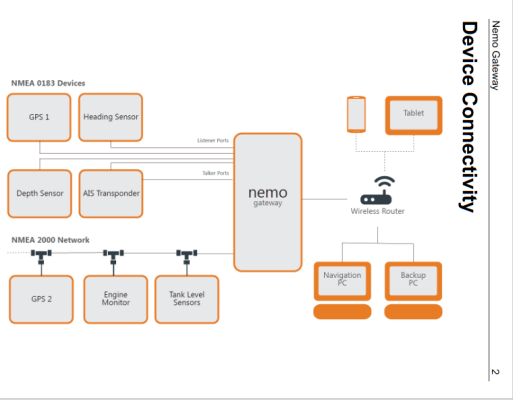HeadedToTexas
Guru
We still have a few years until we are putting in serious distances. Until then, I am happy with the job Navionics does running on an iPad. We have redundancy with a second iPad or smart phones when needed. When the time comes, my plan is to reconsider the state of the electronic navigation market and then make the smart decision. Guessing it will be a MFD with the usual items running on a NMEA 2000 network and a WiFi gateway to enable the tablet to be used in a route planning or casual way.
In the meantime, I would like to explore the possibility of getting our old Simrad AP16 autopilot to follow a route of waypoints from Navionics. Since I don't find a lot of write ups on it, I am guessing that today's WiFi gateways or other connectivity for the iPad do not permit the AP16 to receive the heading commands from Navionics.
Seems like this should not be an uncommon objective. What am I missing? I get that the wireless connection may not be robust enough to depend on for long passages or tight traffic areas. I always hand steer in heavy traffic or tight channels, and never trust the autopilot to take the place of my attention at the helm. Still, it would be nice to have it follow a simple set of waypoints. Anyone doing that?
In the meantime, I would like to explore the possibility of getting our old Simrad AP16 autopilot to follow a route of waypoints from Navionics. Since I don't find a lot of write ups on it, I am guessing that today's WiFi gateways or other connectivity for the iPad do not permit the AP16 to receive the heading commands from Navionics.
Seems like this should not be an uncommon objective. What am I missing? I get that the wireless connection may not be robust enough to depend on for long passages or tight traffic areas. I always hand steer in heavy traffic or tight channels, and never trust the autopilot to take the place of my attention at the helm. Still, it would be nice to have it follow a simple set of waypoints. Anyone doing that?


